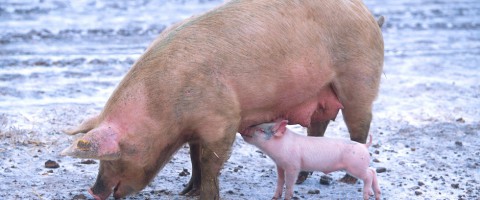As a scientist, Evelyn Fox Keller hated experiments. Today a professor emerita in the History of Science at MIT, she started out her scientific career in theoretical physics before jumping to molecular biology. What got her was the trivial volatility inherent in experimentation. “Someone could brush by the thermostat on the water bath, and a months’ work would be down the drain. You didn’t have control over it.”
The methods of theoretical physics better suited her. “Just by thinking, you could deduce the way the world is. I could think about questions like, Why is space three dimensional? There were kinds of answers you could come up with, just with thinking in theoretical formal terms…But it was all very other-worldly; it had nothing to do with the concrete world in which we live. I was totally intoxicated by these ideas, thinking worlds into being, out of pure thought.”
Both theoretical physics and molecular biology are scientific disciplines, but what does it mean that their routes to knowledge can be so different?
While the scientific method is routinely described as a linear path from observation to hypothesis to experiment to discovery, the everyday of scientific labor is much less ordered. It’s a process that’s circuitous, iterative, and often serendipitous. It can involve transcendent experiences of thinking the world into being alongside random accidents and detours. As a result, the realities of science in the making are simultaneously much more mundane—and much more interesting—than what the idealized version of the scientific method might lead us to believe.
These ideals also constrain how we define, understand, and talk about science. Science is bounded on all sides by what it isn’t, so often defined in opposition to the messy world of human actions. Science is defined against art, politics, religion, and culture. We’re told it’s not emotional, irrational, mystical, or personal. At the same time, science is criss-crossed by the internal boundaries splintering disciplines, isolating people based on methods, goals, and language.
In creating Method Quarterly, we wanted to bring together scientists, scholars, artists, and writers across the many fractured boundaries of science, to explore the rough edges and fuzzy uncertainties of scientific methods. Our first issue features pieces by academic and industry scientists, by an anthropologist studying science and “other” knowledges, a policy researcher, a poet, and a professor of experimental fiction, and of course, amazing science writers. They feature stories of people, places, and things that remain unbounded, unable to fit into any one category.
With “Boundaries,” we hope to explore the grey areas in and around the edges of science. Doing so might help us better understand what counts as “science” in the first place (and what doesn’t), who makes it (and who doesn’t), and how we might go about subverting or breaking down those boundaries altogether.
We explore the vital imperatives of nuclear containment, juxtaposed with its mundane realities (with a side of kitty litter). We participate in a Ganzfeld experiment, which measures psychic abilities, to look at what the blurry boundaries between science and pseudoscience tell us about scientific methods. We look at the lines—man-made and feeble—that separate nature and the sprawling untame of concrete that is Los Angeles. And we learn from Evelyn Fox Keller’s disciplinary border crossings and how she transformed concepts of gender in science. And much, much more.
We’re very excited to share these stories with you, and we hope you’ll stick around as we keep asking, what is this thing called science?



